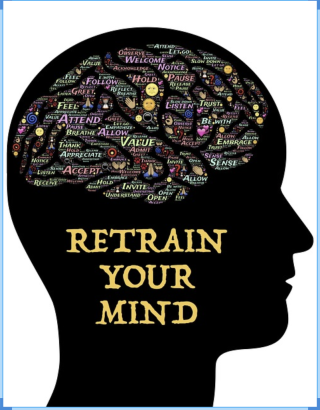Happiness
4 Ways Technology Can Rewire Our Happiness
The secrets of a happy life in the digital era.
Updated June 13, 2024 Reviewed by Abigail Fagan
Key points
- Find media content that promotes positive emotions for resilience.
- Practice meditation using apps to enhance empathy and compassion.
- Participate in acts of kindness and altruism for personal wellbeing by sending loving texts.

I've read extensively about positive psychology and often ponder how to apply this knowledge to our technology use. Recently, I found a new perspective through neuroscience. Inspired by a discussion between well-known scientists from the University of Wisconsin-Madison and the Dalai Lama on enhancing global peace and well-being, I delved deeper into this topic. One of the moderators, Professor Davidson, a renowned neuroscientist, has published numerous studies on meditation's effects on the brain and our well-being.
He identifies four key constituents of well-being, all linked to specific neuro-circuits in the brain. These circuits exhibit neuroplasticity, meaning they can be shaped by training and learning. Prof. Davidson asserts that we can take responsibility for shaping our minds due to neuroplasticity. Since our brains are often shaped unintentionally, why not strengthen networks that support our well-being rather than those less useful, such as knowing who won the latest battle in the TV show “Survivor” (no offense “Survivor” fans:).
Well-being is a skill, like learning to dance or speak another language, requiring frequent practice to see it manifest.
Here's a summary of Richard Davidson's talk on the four constituents of well-being and how we can use technology to "rewire" these aspects in daily life:
1. Resilience
Resilience is the ability to recover quickly from adversity. Resilient individuals' brain areas return to baseline faster after adversity, enhancing well-being.

Rewiring Resilience Using Technology. Barbara Fredrickson's research shows that positive emotions enhance resilience. Now, think about the last moment you smiled or even laughed out loud. It is likely that it was a moment you were with someone else, but it is similarly likely it was a moment where you received a funny text message from a friend or stumbled over a funny reel on IG while (let’s be honest) using the bathroom. While these incidental moments boost mood, apps like Happify or Moodfit provide scientifically proven exercises and games that enhance resilience by increasing positive emotions throughout the day and therefore boost resilience.
2. Positive Outlook
This involves seeing positives in negatives or others and savoring positive experiences. Specific brain circuits underlie this ability, which can be quickly changed through Love and Kindness Meditation (LKM). LKM leads to increased social connectedness, empathy, compassion, and prosocial behaviors, reducing stress and even migraines.
Rewiring a Positive Outlook Using Technology. It is hard to keep a positive outlook when a lot of the media landscape today is saturated with negativity. This is why we need to leverage technology for the good. Meditation, once exclusive to monks, is now accessible through apps, making it mainstream. For instance, some apps, like Healthy Minds, offer step-by-step meditation guides, including practices for increasing kindness and compassion, accommodating various preferences like walking or guided meditations with music.
3. Attention
Harvard researchers Killingsworth and Gilbert found that a wandering mind is an unhappy mind. On average, our minds wander 47% of the day, leading to unhappiness. We need to train ourselves to focus on the present rather than distractions.
Rewiring Attention Using (or Avoiding?) Technology. Technology often distracts us, reducing our attention spans. Research shows that knowledge workers face interruptions by technology seven or eight times per hour. But, Gloria Mark's "Attention Span" highlights that we often self-interrupt. That means we check our email or phone in the middle of deep work, without any external trigger. To counter this, we can use apps and website blockers like Freedom during deep work periods and set our communication channels to Do Not Disturb (DND) mode. Tyler Rice, CEO of the Digital Wellness Institute, advocates for Tactical Disconnection, meaning strategic technology breaks to recharge. To help regain some of our attention, unplugging and taking a real break from technology is just as important as using technology to train our attention. Spending time in nature, paying attention to its sounds and smells is a highly efficient strategy to sharpen our focus. It doesn’t have to be much. A five-minute walk around the house is already enough.
4. Generosity
Acts of kindness and altruism activate specific brain circuits associated with well-being. Research consistently shows that giving to others or buying things for others makes us happier than buying for ourselves. Love and kindness meditation also increase prosocial behaviors.
Rewiring Generosity and Kindness Using Technology. With technology at our fingertips, it is as easy as never before to just send our loved ones a note of appreciation or a little: "I am thinking of you" note. These small snippets of everyday love go a long way to rewire our brains. We can also be more strategic in using apps such as KarmaKitchen where you pay for a meal of the next person in line, rather than your own, for example. Or simply be strategic about the type of media content we consume daily. For example, Participant Media, a socially responsible production company that produces socially conscious media ignites real-world impact, such as nationwide support for gender equality from the film RBG (Ruth Bader Ginsburg) or the passing of landmark legislation to provide 2.4 million domestic workers with benefits from the film Roma. As you can see, there is good in the media. We just have to pay attention to it and use it kindly.
Using technology strategically, we can enhance various well-being constituents. We have the tools to rewire our happiness; we just need to know how.
Disclosure Note:I am not getting paid by any of these apps to promote them. These are simply ones I found useful in my own life.


